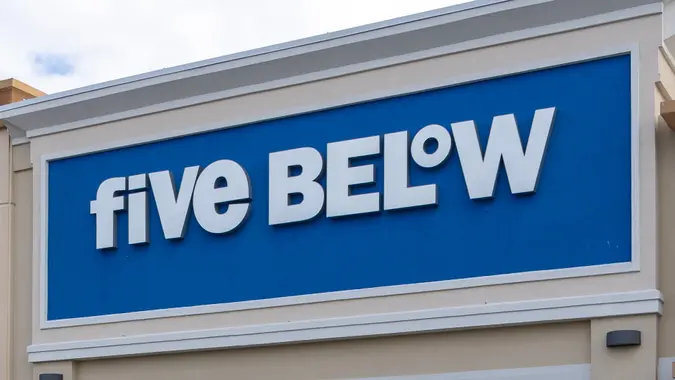How Much You Can Save: Meal Prepping vs. Takeout Over a Month

Commitment to Our Readers
GOBankingRates' editorial team is committed to bringing you unbiased reviews and information. We use data-driven methodologies to evaluate financial products and services - our reviews and ratings are not influenced by advertisers. You can read more about our editorial guidelines and our products and services review methodology.

20 Years
Helping You Live Richer

Reviewed
by Experts

Trusted by
Millions of Readers
Meal prepping often sounds tedious until you see the actual dollar savings. The difference between cooking at home and ordering takeout adds up to thousands of dollars annually that most people don’t realize they’re wasting.
Let’s break down the real numbers comparing a month of meal prepping to a month of convenience eating.
The Takeout Budget Reality
The average American household spends about $350 a month on restaurant meals and takeout — which can easily break down to $10 and higher per person per meal once you factor in delivery fees, tips and inflated menu prices.
Three meals daily at $12 each costs $36 per day or $1,080 monthly for one person. Most people don’t eat out three times daily, but breakfast sandwiches, lunch at work and dinner delivered a few times weekly quickly hits $500-$700 monthly.
A couple spending $700 each on convenient meals burns through $1,400 monthly just on food. That’s $16,800 annually — enough for a decent used car or solid vacation.
The Meal Prepping Budget
Grocery costs for cooking at home run dramatically lower. A single person can eat well on $300 to $350 monthly buying ingredients and cooking at home. A couple can manage for a little more than $600 total.
Here’s a realistic monthly grocery budget for one person:
Proteins ($80-$100): Chicken breasts, eggs, tofu, tempeh, beans, lentils. Buying in bulk and freezing portions keeps costs low.
Grains and Starches ($40-$50): Rice, pasta, potatoes, oats, bread. These are filling, cheap and versatile.
Vegetables ($60-$70): Mix of fresh and frozen. Frozen vegetables are nutritionally identical to fresh but cost less and last longer.
Fruits ($30-$40): Bananas, apples, seasonal produce, frozen berries for smoothies.
Dairy and Alternatives ($25-$30): Milk, cheese, yogurt, butter.
Pantry Staples ($15-$20): Cooking oil, spices, sauces, condiments.
Total monthly cost: $250 to $310 for one person eating three meals daily plus snacks.
The Math on Savings
Someone spending $700 monthly on takeout versus $300 on cooking at home saves $400 monthly or $4,800 annually. A couple saves $800 monthly or $9,600 yearly.
That’s conservative math assuming only moderate takeout habits. People ordering dinner five to six nights weekly plus regular lunch delivery can easily hit $1,000-plus monthly per person. Cutting that to $300 through cooking at home saves $700 monthly or $8,400 annually for one person.
The savings compound if invested. Putting $400 monthly into an index fund at 8% annual returns grows to roughly $5,900 in one year, $29,500 in five years, and $73,000 in 10 years.
Sample Weekly Meal Prep Plan
Here’s what $71 in groceries buys for one week of lunches and dinners (breakfast not included):
Shopping List:
- 3 pounds chicken breast ($12)
- 3 packages extra-firm tofu ($10)
- 2 pounds lentils ($4)
- 5 pounds rice ($5)
- 2 pounds pasta ($3)
- Frozen mixed vegetables, 3 bags ($9)
- Fresh broccoli ($3)
- Potatoes, 5 pounds ($4)
- Canned black beans, 4 cans ($4)
- Tomato sauce, 2 jars ($6)
- Shredded cheese ($4)
- Cooking oil, spices ($6)
- Bread ($3)
- Peanut butter ($3)
Meals Prepped (14 total):
- 4 tofu and rice bowls with vegetables
- 4 chicken taco bowls with beans and rice
- 3 pasta with lentil bolognese
- 3 stir-fry with chicken or tofu and vegetables
Cost per meal: $5.36
Compare that to $15 per takeout meal. You’re saving almost $10 per meal, or almost $140 weekly on just lunches and dinners.
Time Investment vs. Money Saved
The biggest objection to meal prepping is time. A solid Sunday meal prep session takes two to three hours to cook multiple meals for the week.
But you should absolutely consider the math. Three hours of meal prep can save more than $100 weekly. That’s around $33-$50 per hour “earned” by cooking instead of ordering out. Most people don’t make $40 per hour at their jobs. Spending three hours on Sunday to save $400-plus monthly is a better hourly rate than many full-time positions.
Add in the time saved during the week by having meals ready to grab. No deciding what to order, waiting for delivery or driving to pick up food. Meal prep actually saves time on weeknights even though it requires upfront investment.
Where Meal Prep Fails
Meal prepping isn’t free money. It requires planning, grocery shopping, cooking skills and eating the same meals multiple times.
Some people hate eating leftovers or get bored with repetitive meals. If meal prep leads to throwing out food because you couldn’t face another chicken and rice bowl, the savings disappear.
Meal prep also assumes you have time on weekends, functional kitchen equipment and basic cooking knowledge. People working multiple jobs, living in places with limited kitchen access or lacking cooking skills face real barriers.
The upfront cost matters too. Buying $300 in groceries at once requires having $300 available, while takeout can be paid for meal by meal. People living paycheck to paycheck might struggle with the cash flow even though monthly totals are lower.
Hybrid Approach for Real Life
Most people succeed with a hybrid strategy rather than all-or-nothing meal prep. Cook dinners Sunday through Thursday, order takeout Friday and Saturday. Meal prep lunches, buy breakfast. Mix and match and find what works for you.
This approach captures most savings while maintaining flexibility and preventing burnout. Someone spending $700 monthly on takeout who cuts to $300 through partial meal prep still saves $400 monthly without feeling deprived.
Editor’s note: Grocery prices vary by location.
More From GOBankingRates
- Nearly 1 in 3 Americans Hit by a Costly Holiday Scam, Norton Survey Shows -- How To Avoid This
- Here's What the Average Social Security Payment Will Be in Winter 2025
- How Middle-Class Earners Are Quietly Becoming Millionaires -- and How You Can, Too
- The Easiest Way to Score $250 for Things You Already Do
 Written by
Written by  Edited by
Edited by 
























